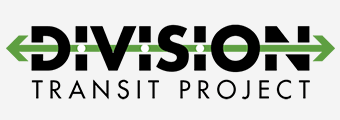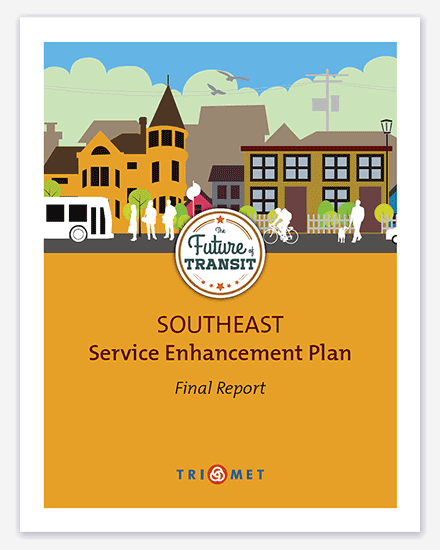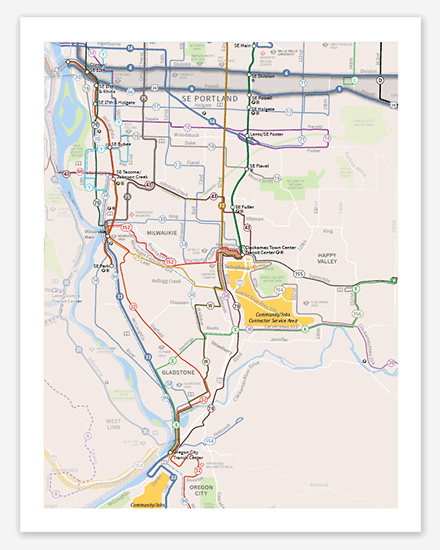Making transit better
in Southeast
The 7.3-mile MAX Orange Line opened on September 12, 2015, and extends from Portland State University, South Waterfront, across Tilikum Crossing, Bridge of the People, to Southeast Portland, Milwaukie, and north Clackamas County. However, even more and better bus service is needed to meet current and future demand.
We talked with riders and community members about improving bus service in the Southeast area of TriMet’s District, including Southeast Portland, Estacada, Gladstone, Happy Valley, Milwaukie, Oregon City, and unincorporated Clackamas County. Based on what we’ve learned about the challenges people face today and how these areas will grow in the future, the Southeast Service Enhancement Plan recommends 3 new bus lines, increasing frequency, expanding hours of service, and route changes on existing bus lines, and new community/job connectors to help people get where they need to go.
Southeast Service Enhancement Plan Report
Southeast Service Enhancement Plan Final Map
Vision for Transit in the Future
The sections below describe some of the improvements that will make bus service better in the Southeast.
1
More East-West Service
This vision recommends improving or adding east-west service in areas where there are gaps in service or where some people must walk farther than a quarter-mile to reach their nearest bus stop. This vision calls for more east-west service on SE Johnson Creek, SE Lake, SE Harmony, SE Sunnyside, SE Jennings, SE Roots, and Highway 212.
2
Access to Opportunities
This vision recommends increasing frequency, expanding hours of service, and route changes on existing bus lines to improve the quality of life in the Southeast, especially for those that rely on transit as their primary source of transportation. This vision calls for more and better service on SE International Way, SE Webster, and Oatfield.
3
Community/Jobs Connector Service
This vision recommends community/jobs connector service in places where the businesses and/or homes are so scattered or are located on so much land that there aren’t enough people within walking distance of bus stops to cost-effectively provide traditional fixed route bus service. In some instances there aren’t enough roadway connections to allow people to walk to and from bus stops safely. The Clackamas Industrial Area, generally between Highway 212 and Sunnyside, and South Oregon City are candidates for community/jobs connector service in the Southeast.
Making this Vision a Reality
Implementing this vision will depend on available resources and an ongoing annual review of opportunities and priorities with an emphasis on equity, demand, productivity, connections, and growth. In September 2015, TriMet’s Board of Directors approved an increase in the payroll and self-employment tax rate with revenues dedicated to new and improved service. This new revenue will fund a portion of this vision, phased in as the revenue grows over 10 years.

Division Transit Project
In addition to the proposed bus service improvements in this vision, the Division Transit Project will make traveling between Gresham and Downtown Portland, and between neighborhoods in the Southeast and Eastside, faster, easier and safer, with more reliable transit service — all to support better access to jobs and educational opportunities. An extensive bus service planning effort will identify further enhancements to support and connect to the new transit service, which could open in five years.









